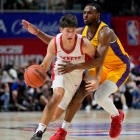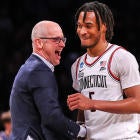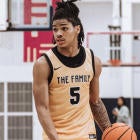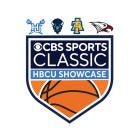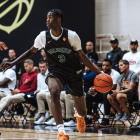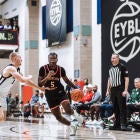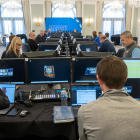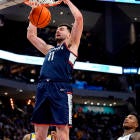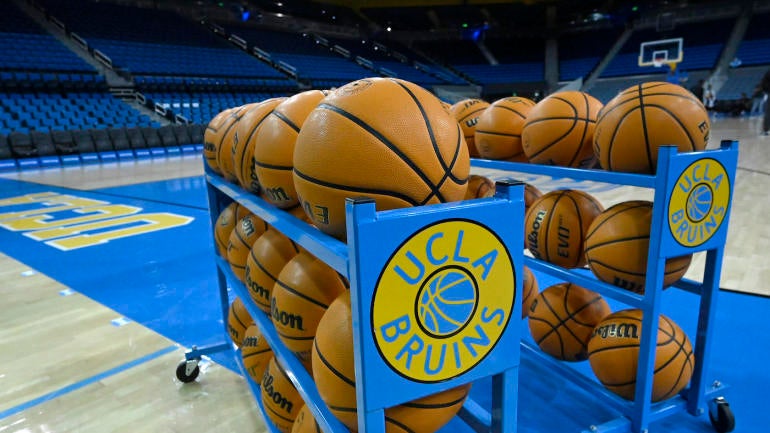
Until 2021, there had never been widespread forfeit rules in place in college basketball. In fact, the NCAA hasn't recognized forfeits in its official statistics for more than 40 years. But in October and November, almost every conference voted to implement a policy that was crafted with the best of intentions. If a team could not play on account of COVID-19 issues for intra-league competition, it would forfeit and take a loss. The other team would get the win (only in the league standings). If both teams could not play due to COVID, it would be a no contest.
While this measure was brought with plenty of nodding and acceptance, it was never demonstrably popular, at least in men's basketball. CBS Sports polled more than 100 coaches for our annual summer survey series on this very topic; the findings were close to a 50/50 split. But big and small conferences alike instituted the forfeit rule as a public health service and a way to increase vaccination rates not just in men's basketball but throughout all NCAA sports.
Problem is, nobody saw omicron coming. Dr. Anthony Fauci, director of the National Institute of Allergy and Infectious Diseases and the chief medical advisor to the President of the United States, said late last week that omicron would be the dominant variant by January with plenty more breakthrough infections than delta. He's already right about the latter and was wrong about the former -- because omicron is now, by a wide margin, the dominant variant in the U.S.
COVID is messing up college basketball. Again. Teams that have 100% vaccination rates have been sidelined by positive tests. As of Wednesday afternoon, more than 55 teams have gone on pause this season, with north of 40 of those pauses active. The Big East has already forfeited three games. Four ACC teams can't play right now. At Yale, fans are no longer allowed at games until at least January.
Thousands of college basketball players got the jab. They did their part. Omicron doesn't care.
Commissioners and league offices found coaches and athletic directors working phone lines, requesting to reverse the rule in recent days. On Saturday, Duke coach Mike Krzyzewski told reporters, "I don't like the forfeit thing, and I don't like the fact that the two teams are not tested the day before, the night before like we did last year."
On Tuesday, the Big 12 and Big West became the first leagues to walk back their forfeit procedures. The ACC followed suit Wednesday morning, followed by the Pac-12 and Mountain West. More leagues -- but not all -- are expected to rescind their policies. SEC commissioner Greg Sankey told CBS Sports he expects the league to alter its forfeit rule before his conference begins intra-league games on Dec. 29.
The Big Ten and Big East are continuing to examine. (While both league offices provided background information, they are the only ones from the power-conference structure that ultimately opted to not have their commissioners speak on the record.)
CBS Sports talked with nearly a dozen commissioners this week, and as one told me, omicron has swept through college sports and caused more urgency than at any point since March 2020. Conferences that have changed their forfeit rules will now deem all league games that can't be rescheduled for the 2021-22 season to be no-contests. Fervid attempts will be made to reschedule whenever possible, but those opportunities will be whack-a-mole-like. A twist: the Pac-12 is maintaining an option to still assess a forfeit "in the event the conference standards of sportsmanship are not met in the process of attempting to reschedule a contest."
The Big Ten office said, "The conference is in the process of evaluating its 2021-22 forfeiture policy for conference contests, including whether a contest should automatically be considered a forfeit. The health, safety, and well-being of our student-athletes and our campus communities is our top priority."
League sources told CBS Sports that the Big Ten has "every intention of changing" the rule back. The Big Ten doesn't have as much urgency around this as other leagues because the conference doesn't resume league play until Jan. 2. Meanwhile, there are at least four leagues staying put with forfeits for now: the American, the Atlantic 10, the Missouri Valley and the WAC, which was first to stick with its policy when the league didn't alter course after discussions on Thursday. (The Ivy League and the WCC were two leagues that never implemented a forfeit policy.)
"I wouldn't close the door on if, a month from now, things changed even more intensely -- then you'd be foolish that you wouldn't keep open the opportunity to discuss," MVC commissioner Jeff Jackson told CBS Sports. "There are no good answers, there are no absolutes. You need to be nimble because things can change and you have to keep the safety of the student-athletes first."
Jackson and WAC commissioner Brian Thornton pointed out that rescheduling games can put other schools at a disadvantage and has downstream effects. Keeping forfeits means the schedule doesn't ever change, and it prevents teams that might -- might -- otherwise try and back out without real consequence in the balance.
"It takes any gamesmanship off the table," Jackson said.
Added Thornton: "At this point we're going forward with that policy. It's not perfect but there's not a lot of options out there, unfortunately. I'm not sure what else you do. As soon as you go with a no-contest, then your standings are all different, especially the way ours is set up. Rescheduling is very hard."
Atlantic 10 commissioner Bernadette McGlade said her league's athletic directors are keeping forfeit policies on the books with "agreement to give league authority to reschedule any game and reverse an earlier declared forfeiture." There will be ongoing reviews about no-contests and postponements.
"We remain fluid and flexible," McGlade said. "This variant is different, we have the vaccinations that are in play, the booster in play, the protocols are all basically some small versions of insurance policy that hopefully your entire program isn't closed down because of a positive."
Every commissioner I spoke with expressed some level of surprise over how quickly omicron has changed the calculus. The forfeit rule was put in place to increase vaccination, curb spread and maintain scheduling integrity. Breakthrough cases -- with mostly fully vaccinated but not yet boosted people -- has sideswiped sports.
"We were not able to establish a vaccine mandate across 11 states, so it communicated the importance of getting healthy, staying healthy and vaccination was central to that effort," Sankey said of the SEC. "Number two in that was games need to be played. You may have members of your team unable to play, but we're going to be sure the healthy members of your team are competing."
The end of December has already rocked college sports scheduling, and January promises to be even worse as health officials project omicron cases to skyrocket before a potential dramatic fall later into the winter.
"We're going to try and reschedule as many of these games as we can," ACC commissioner Jim Phillips said. "The dates become tight and we certainly want to be sensitive toward player safety and not playing too many games over a short period of time. At the end of the day, kids and staff members aren't trying to get the virus or get sick. It was the right thing to do from a health and safety perspective and what's the right thing, competitively."
Forfeits in league standings have direct impact on how conference standings and conference tournaments are played. Big 12 commissioner Bob Bowlsby needn't look any further than at the team in Waco last season.
"We need to be responsive to that changing environment," Bowlsby said. "What happens if we have a proliferation of disruption and we have a situation like we had with Baylor last year? If Baylor had forfeited all of those games, it may have changed the entire postseason."
Bowlsby noted the first step is now postponement rather than cancellation, but rescheduling games will be a hard needle to thread; league schedules this season were not built with COVID in mind, whereas last season they were. Most conferences will also go back to the "seven-and-one" minimum that was put in place last season, meaning any team that has at least seven eligible players (scholarship or non-scholarship) and one coach is mandated to play. The Big 12's rule is six-and-one, while the A-10 is eight-and-one.
Some leagues are better built to tweak schedules than others. The Pac-12 has six travel partners, so its schedule is a Thursday/Saturday rotation.
"The travel partners, in some respects, are a challenge but can also be an opportunity because we have this cadence of games where everyone is home and away," Pac-12 associate commissioner Jamie Zaninovich, who oversees basketball, told CBS Sports. "And on Monday and Tuesday, the Pac-12 has real estate to fill in."
The Pac-12 is in as strong of a position as any league in the country, as 10 of the 12 schools mandate vaccination (Arizona and Arizona State do not), so its vaccination and booster rates are among the best in college sports. McGlade said four A-10 teams have been boosted this week. Many commissioners CBS Sports spoke with are tracking what teams are 100% boosted, as that information could wind up being key when games need to be rescheduled. A 100% boosted team is viewed as exceedingly unlikely to need to be shut down.
The scramble is on to prepare for a topsy-turvy January, and likely February, but there remains hope that March could see a recession of cases. Not one commissioner, AD or coach I've spoken with this week is enthusiastic about what awaits in January, though.
"Anybody that thinks we're going to be able to put a policy in place and it's guaranteed to help us manage basketball throughout the season without issues is delusional," Bowlsby said.
Said Zaninovich: "Don't make any decisions earlier than you have to."
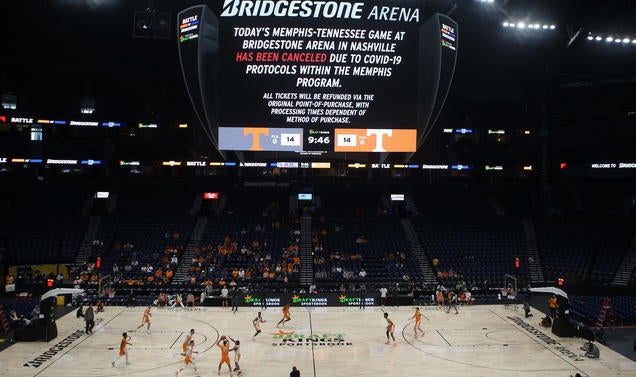
Save the season? Change testing, quarantine rules
No matter how many leagues walk back their forfeit rules, those policy changes won't decide whether games can be played as scheduled. What will dictate that is the spread of the virus this winter (via existing variants or others that could arise), booster rates and other preventative behaviors across the sport and, perhaps most importantly, how decisions about testing are made at the local level.
"It's constantly evolving, and you need to make small adjustments," Bowlsby said. "I'm not buying into the drama. From an operating procedures standpoint, we're not doing anything different than we have before."
Conferences do not dictate how often and in what way schools test or quarantine their players -- those rules were dialed back earlier this year, when most hoped/believed the worst of the pandemic was behind us. Schools now handle testing in ways their medical advisors prescribe. There are 358 programs, and they don't approach testing uniformly. I spoke to two coaches this week who told me they've tested all players weekly since the preseason. Conversely, dozens of other coaches said, until the past week or so, they went more than two months without testing the vaccinated -- because there was no reason to. No players showed symptoms.
Then omicron arrived.
What's essentially universal procedure is, if you show symptoms, you test. If you are positive, you quarantine, and if unvaccinated players or other unvaccinated Tier 1 personnel are contact-traced, they are tested and immediately quarantined, too. That protocol hasn't changed. Some coaches -- most notably, the biggest name in the sport -- believe a return to this model of testing, which was commonplace last season, should be the norm again.
"We are making a big mistake in not doing that," Krzyzewski said recently, later adding, "I don't know why we can't do that."
Duke has returned to daily testing, Krzyzewski said. He also alluded to some cynicism that pervades college basketball behind the scenes, where some coaches and administrators have skepticism over the rigorousness that opponents might have with testing.
"Our doctors, they all felt good about it," Krzyzewski said of Duke's scheduling improv to play Elon on Saturday. "Can we be sure that would happen everywhere? I would like to know if the other team was tested, before we play, going forward."
The question becomes: should asymptomatic fully vaccinated (and/or boosted) people have to test? For some of the schools, the answer is no. If one person is symptomatic and tests positive, it does not trigger team-wide testing. Among the vaccinated and boosted, only those showing symptoms are subject to testing. This very scenario presented itself on Tuesday, when Georgia Tech had multiple symptomatic vaccinated players test positive -- but the asymptomatic vaccinated players did not have to test. Georgia Tech still played its game vs. Georgia State.
However, there are schools where the first positive test must prompt the rest of the team to be tested. If this doesn't change for the overwhelming majority of teams, college basketball's schedule is going to go into a blender for the remainder of the season. The biggest reason is a lag in booster shots across the sport. In speaking to roughly 30 programs in the past week, most of those teams did not have most of their players boosted. Plenty aren't there yet because a good number of players got their second vaccine shot less than six months ago, so they are not yet eligible.
Here's the rub: Only three weeks ago, 99.5% of COVID cases were from delta, per the CDC. Omicron has changed the dynamic because of how absurdly contagious it is. So when you have a situation where one or two players test positive after showing symptoms, teams whose protocols dictate the entire team tests -- even if not showing symptoms -- can sideswipe a program into a pause. It's happened with multiple teams currently on the shelf.
"This thing's like a brushfire right now," Big West commissioner Dan Butterly said.
If the majority of schools follow Coach K's suggestion, college basketball's season will be more desecrated over the next two months than it was last season -- by a long shot. The key to reasonably holding the season together is boosting players -- thus keeping them as protected from COVID as possible -- and not testing the vaccinated/boosted unless they present symptoms.
There is no silver bullet with COVID. Omicron has wreaked havoc on sports (and the world) to measures that brought flashbacks to March 2020. On Monday, federal health officials revealed 73% of COVID-19 cases are omicron, as the variant has overthrown delta in one week's time.
The NHL is shut down until after Christmas. The NFL has more than 140 players on its COVID list. The NBA has put more than 110 players into health-and-safety protocols this month; more than 15% of the team's players were out as of Monday. But there is good news. Emerging data suggests the boosted have a layer of protection that is staunch enough to stave off team-wide shutdowns. How do we know? The NBA. The league is working with some of the best and brightest scientists and doctors in the world, and Tuesday NBA commissioner Adam Silver appeared on ESPN to discuss the state of his league. Silver said 90% of the NBA's current cases are omicron.
"In terms of players and coaches that have gone through the three-shot protocol -- meaning the two mRNA shots and then a booster and then past two weeks -- only a very small number of those people have then been breakthrough cases where they've turned positive," Silver said. "And they essentially have been asymptomatic or very mild symptoms."
The data also reflects positive trends from South Africa, where omicron originated, and Israel, which is among the most vaccinated and boosted nations. If college basketball is to have a January, February and March that is unfortunately bumpy -- as opposed to outright calamitous -- then as many teams as possible are going to have to only test symptomatic players and unvaccinated players. If you are vaccinated and/or boosted and without symptoms, you are spared.
Otherwise, omicron has shown us what awaits in the coming weeks. Dozens of teams on pause at a time. It will destroy conference schedules, league standings and render conference tournaments to be the ultimate crapshoot. This will also have serious adverse effects on NCAA Tournament résumés and the seeding/selection process.
The NCAA held an emergency call on Wednesday with conference representatives from all 32 leagues and its medical advisory panel. Sources say no policy changes were announced, but the expectation from Indianapolis is that the CDC could soon update its quarantine guidelines for the fully vaccinated and/or boosted. The days in quarantine could be reduced, as could the capacity to test out more quickly.
"There is a growing body of evidence that infection with omicron goes away more quickly than some other variants, so there has been talk about being able to be cleared after as short of a window as five days," Bowlsby told me. "There is also some conversations about being able to test out of isolation."
The CDC hasn't gotten there yet. It's still at 10 days. Until that changes, the NCAA and schools will be reluctant -- if not refusing -- to change it because they let the CDC pave the path, even if reliable data from the NBA or NFL is ahead of the CDC curve. The NFL's new process is no testing for asymptomatic and vaccinated (and/or boosted) players (with random testing still applying for potential exposure).
"We're just going to have to be nimble and flexible during this period, and you're not going to be able to dig your feet in on many things," Phillips said.
College commissioners are asking their medical groups overseeing their leagues and they are also connecting the NFL and NBA and NHL data.
"It's hard not to think that wouldn't be a factor," Bowlsby said. "All teams -- football, basketball -- you can't argue or debate [the same way]. It becomes individualized."
That could influence how quickly a change could come at the league level, but many conference commissioners still don't see a league moving out of step with formal NCAA guidelines. These decisions are bumping right up against the College Football Playoff, however, and one high-ranking NCAA source said it would not be a stunner to see if one of the leagues that has a team in the CFP changed its quarantine protocols as a preventative measure against positive asymptomatic test results.
Expect a lot more change in college sports on this front in the coming two weeks.
@ me
The Court Report's mailbag! Find me on Twitter, toss a question and I'll answer some each week.
Will the 2022 NCAA tournament be in a bubble again?
— Marnie Mitchell (@TheRealMarnieM) December 22, 2021
Omicron has made me vow to never say never with this damn virus ever again. But I cannot envision this happening with vaccines and booster shots available. The NCAA is not in the cautionary planning stages for this at this point, and it borderline would have to be right about now.
Do you think the Big 10 can get 10 bids?
— A$AP Ryan (@ChefRykwon) December 22, 2021
I don't, but there are 11 teams at this point that have a right to believe they can get there. Everyone except Penn State, Rutgers and Nebraska has a way to get there. Mark me down for nine Big Ten bids in March.
Davidson’s win has me thinking - how many bids do you see from the A-10?
— Campbell Smith (@CampbellsmithSC) December 22, 2021
People love some conference bid projections, don't they? The Atlantic 10 really needed that Davidson win on Tuesday (more below). But scan the league's placement in the NET: Davidson is 44th, then Saint Louis is 70th, VCU is 74th. Two bids might be the destiny here.
What’s going on in Chapel Hill? Good roster that has laid an egg against every good team they’ve played this year aside from Michigan, and I’m not sure that win is as respectable as it was the day of.
— Matt Mullins (@mattmullins84) December 22, 2021
We addressed North Carolina on Sunday's edition of Eye on College Basketball. The Heels won Tuesday by 20 at home over Appalachian State, so that's a positive sign. The team is 9-3 and rebounded well after getting thumped by Kentucky. Hubert Davis is doing solid for himself in his first season, and remember this: the previous two seasons UNC was 32-30 under Roy Williams with no NCAA Tournament wins and a 16-20 record in the ACC. Anything that's a No. 7 seed or better for UNC this season is a job well done for Davis in Year 1.
A lot of pub for Och Agbaji responding to NBA recommendations and being on a mission. But last 5 games, Christian Braun has played every bit as good. Is CB playing himself into the league?
— Frank Saunders (@flsku) December 22, 2021
The last five games for Christian Braun, all Kansas wins: 20.6 ppg on 76.1% 2-point shooting, 36.8% from 3 and 6.2 rpg without more than two fouls in any contest. Braun is an NBA prospect for sure.
Final shots
• Bad news for 10-2 Houston: Tramon Mark (10.1 ppg) is out for the season after shoulder surgery. Important piece for the Coogs, who are the only top-30 KenPom team in the American.
• Davidson's win Tuesday night over No. 10 Alabama only happened because Davidson lost its game scheduled for Wednesday due to Loyola Chicago going on COVID pause, the same being true of Alabama having Colorado State cancel due to an outbreak. So that allowed for the teams to schedule each other, and in the process, give Davidson a massive win, turn itself into an at-large candidate ... and beat a top-10 team for the first time since Steph Curry was on campus (2008).
• Baylor is building a new home arena, and here's the best part: it's going to be cozy. Capacity: 7,000. This is the perfect size and will only make BU's home-court advantage that much more intimidating.
• Villanova trailed by 10 at the half at home to Xavier and won 71-58 on Tuesday. I liked what I saw there. But the more I think about it, the harder it is for me to get over Nova's lack of size. This team has a lower ceiling than I believed in October.
• The Pac-12 is bizarre. UCLA is ranked No. 5, Arizona is No. 6, USC No. 8. Those three are 31-1. Then there's the rest of the league. Colorado sits with just three losses still (and is on pause after last night's cancellation vs. Kansas) and everyone else has four or more losses and no other team is inside the top 50 of the NET. The Pac-12 could have three Final Four-level teams but no one else makes the tournament. Can't remember a similar situation.
• Speaking of the Pac-12, there is a hex over Mike Hopkins' Washington program. The Huskies have lost home games this season to Northern Illinois, Wyoming, Nevada, Winthrop and, on Tuesday, Utah Valley. Those teams are a combined 33-21 and beat UW by an average of 11 points.
• So, check this play out from Tuesday night. It was counted as a 2-pointer in real time (huh?) because the officials deemed it wasn't an intended 3-point shot. Have never heard of such a thing, and I'm pretty sure the refs got this way wrong. A 3 is a 3 is a 3.
ALLY OOPSSS#SCtop10 pic.twitter.com/l7NXW5HfIZ
— USU Men's Hoops (@USUBasketball) December 22, 2021










